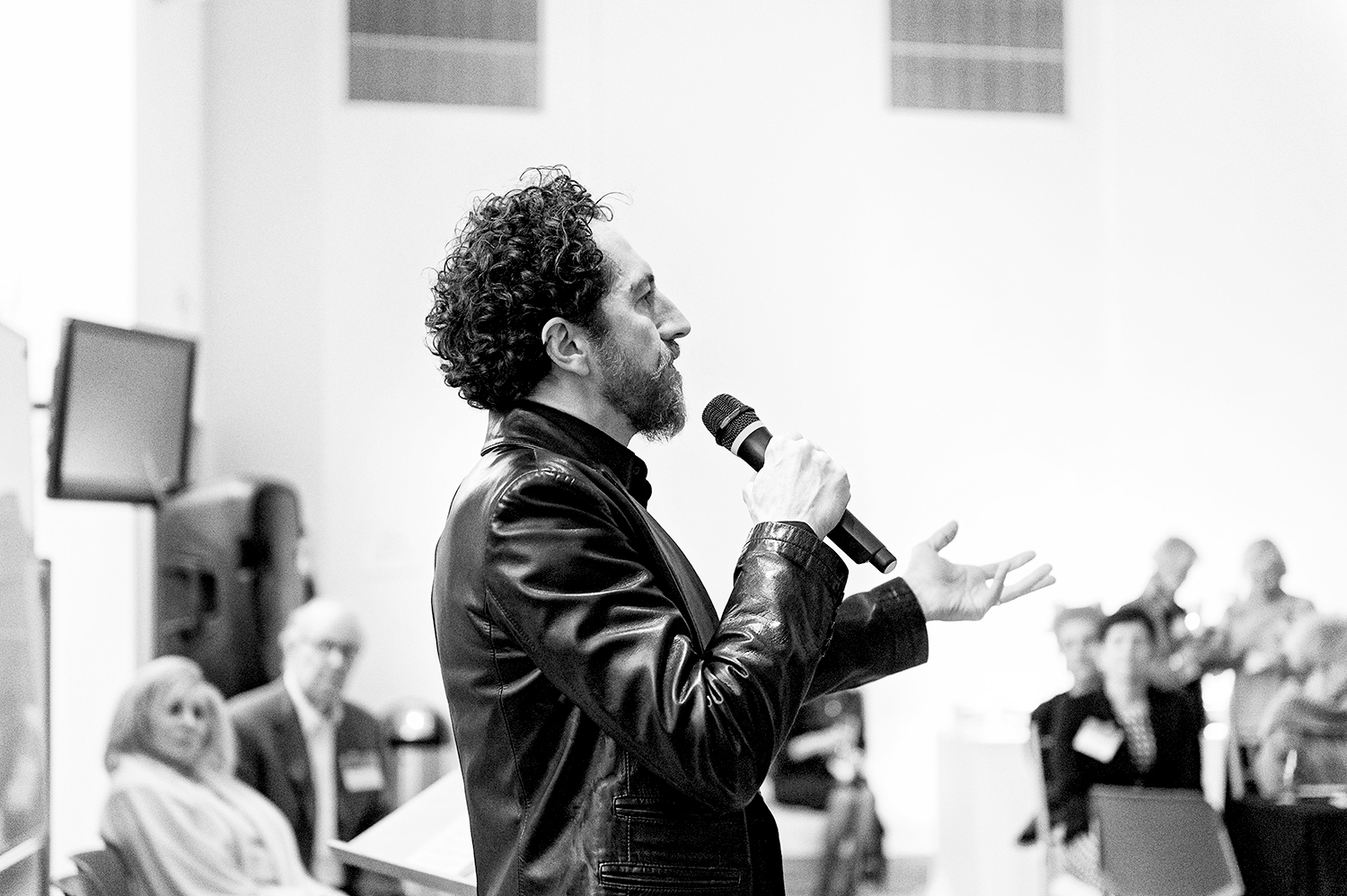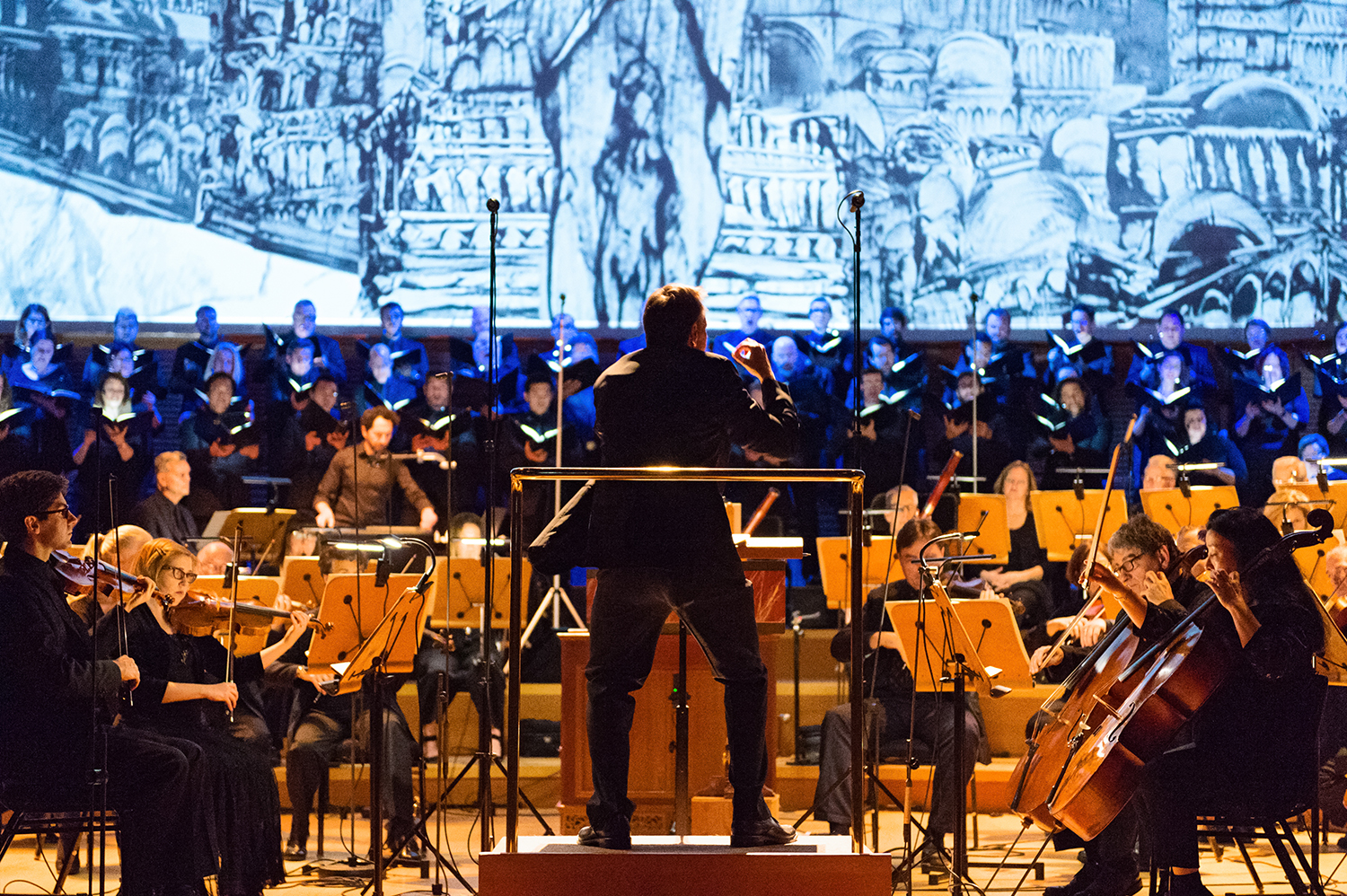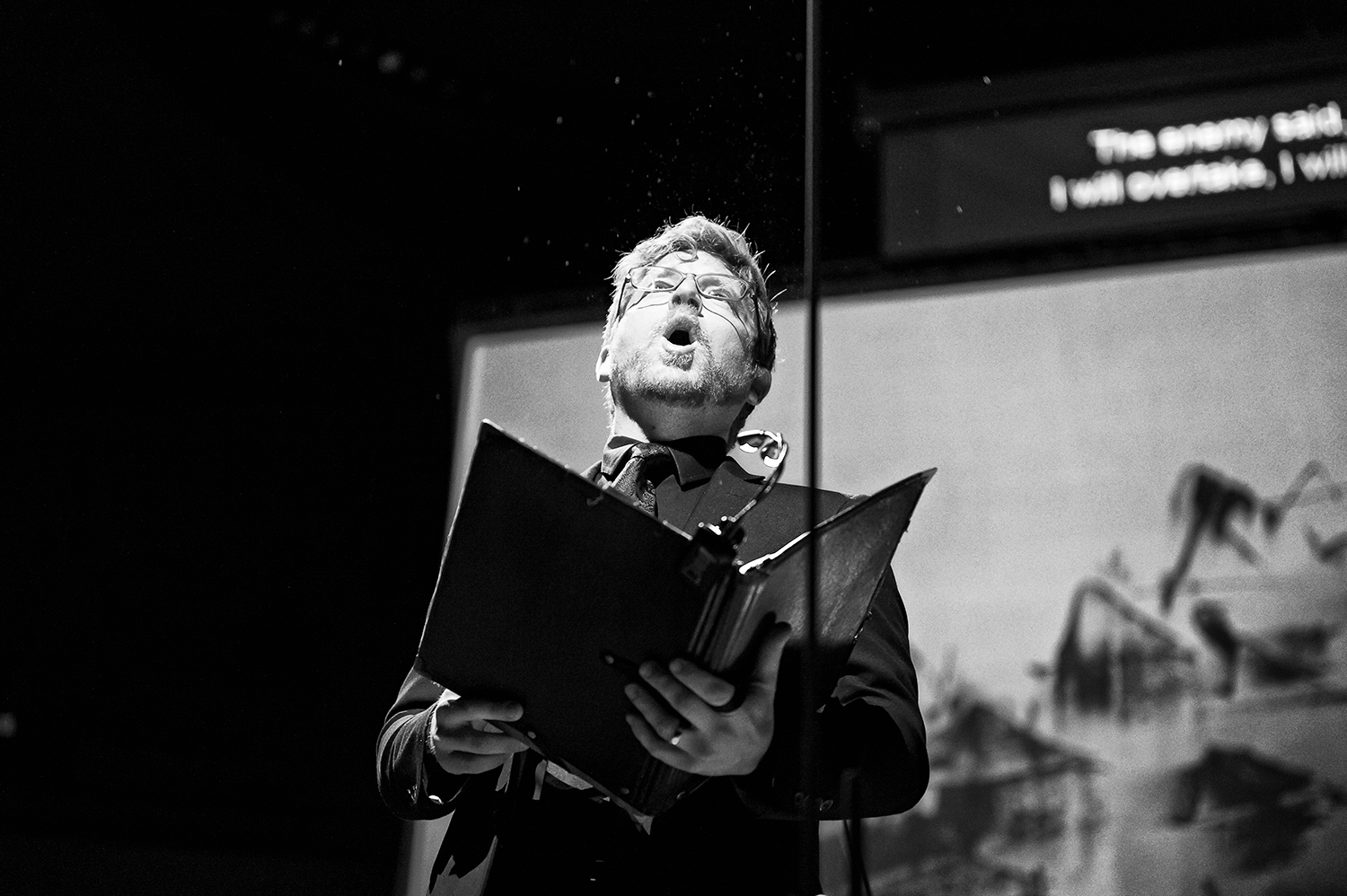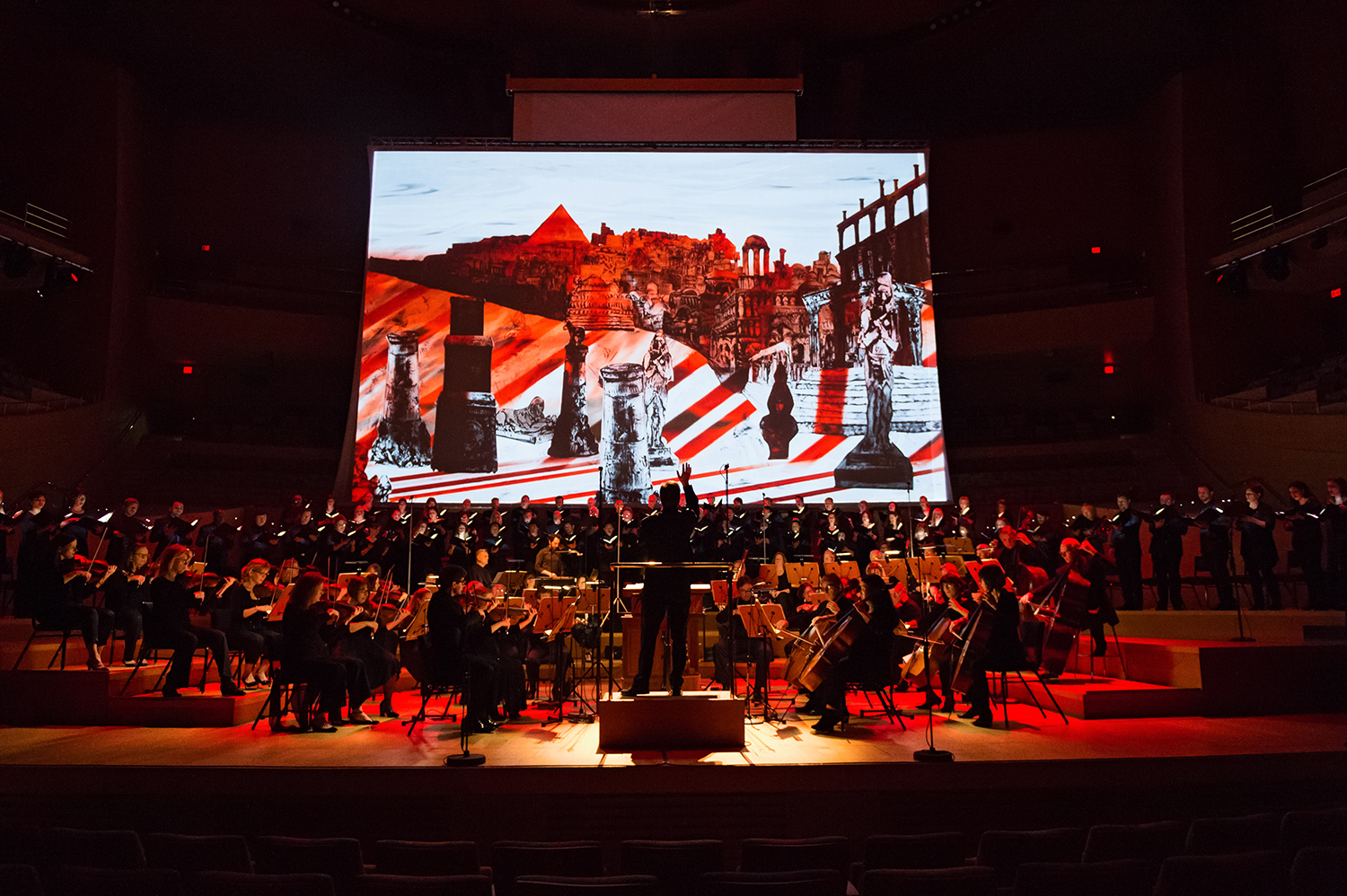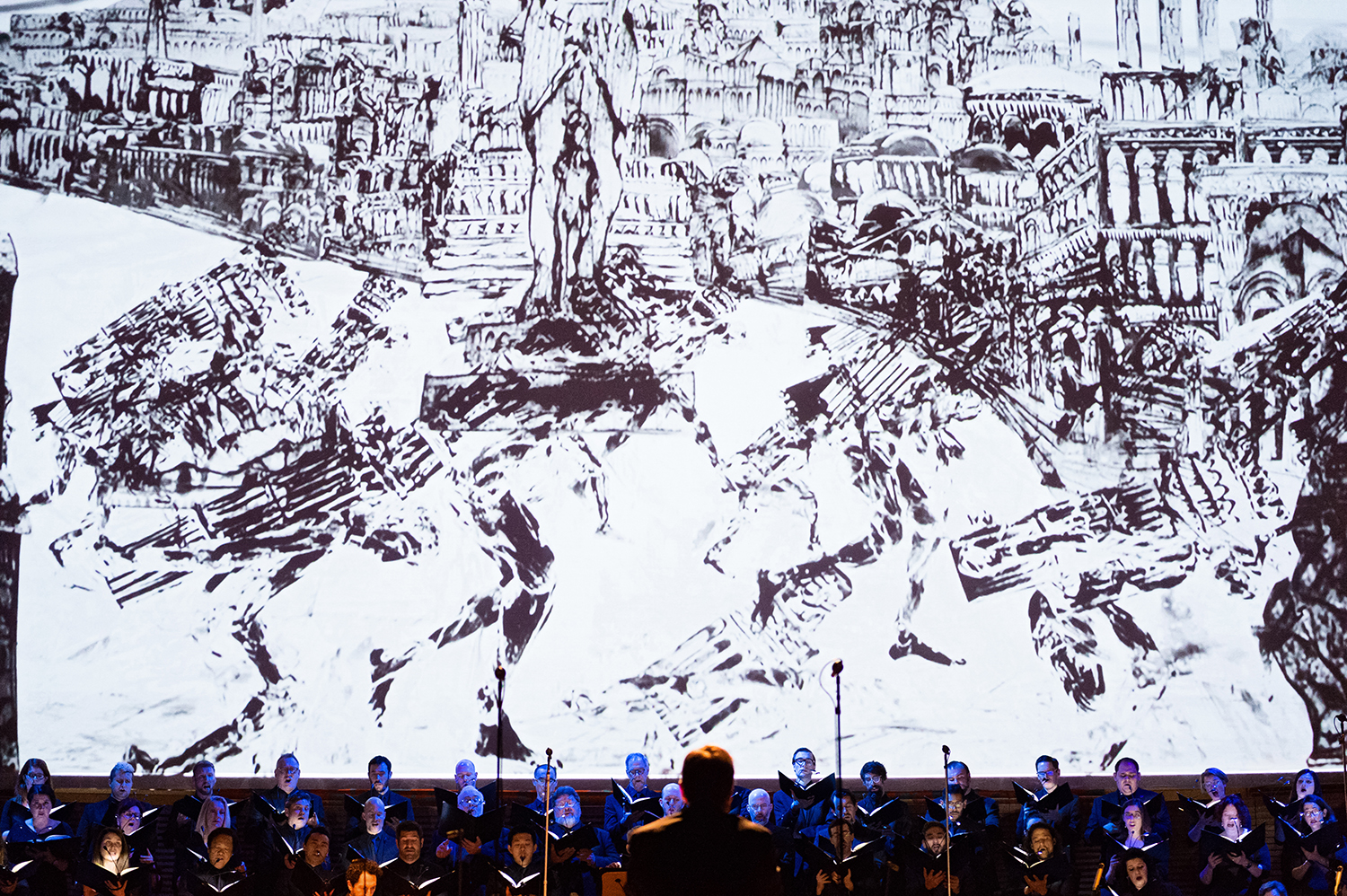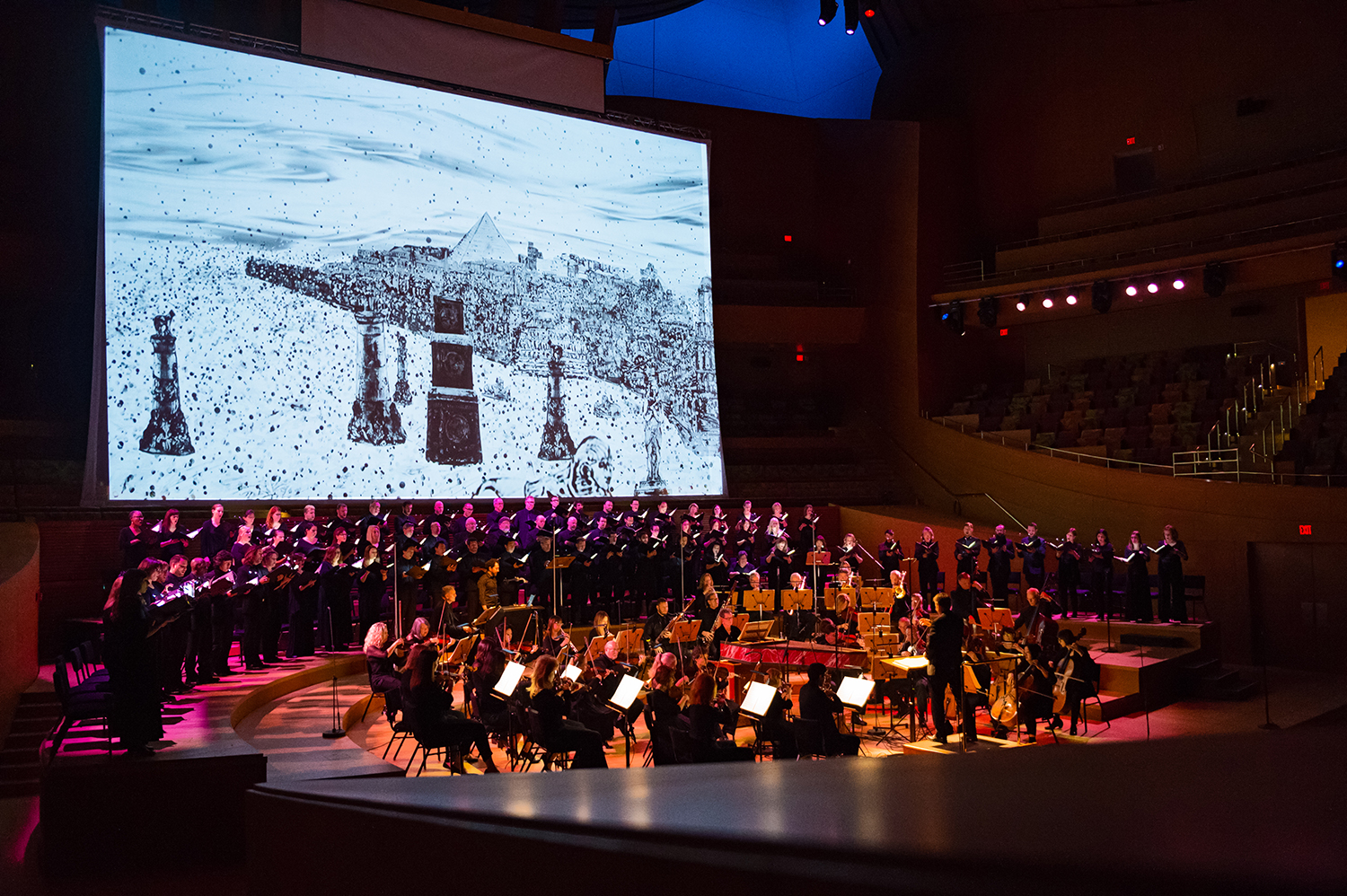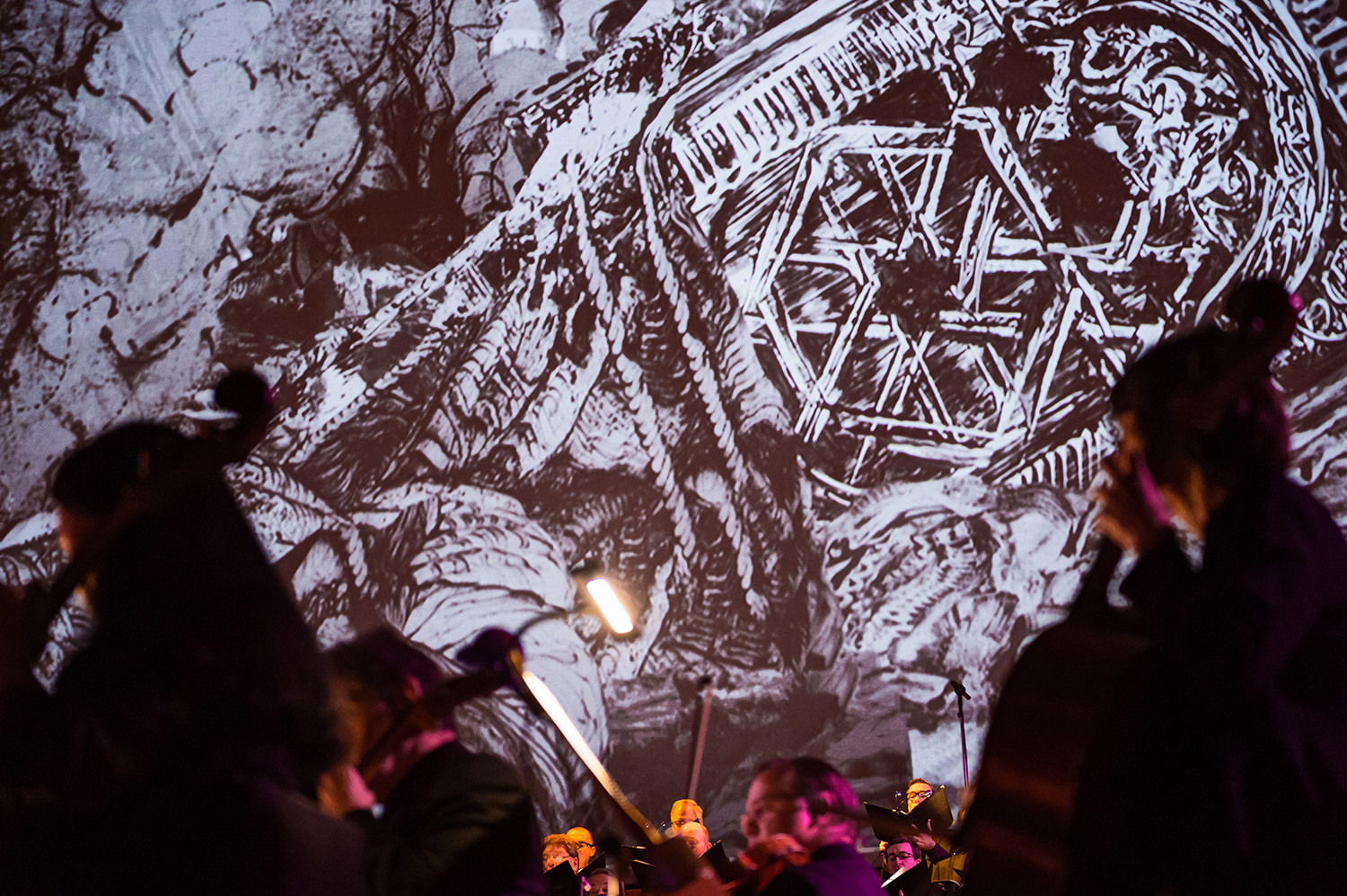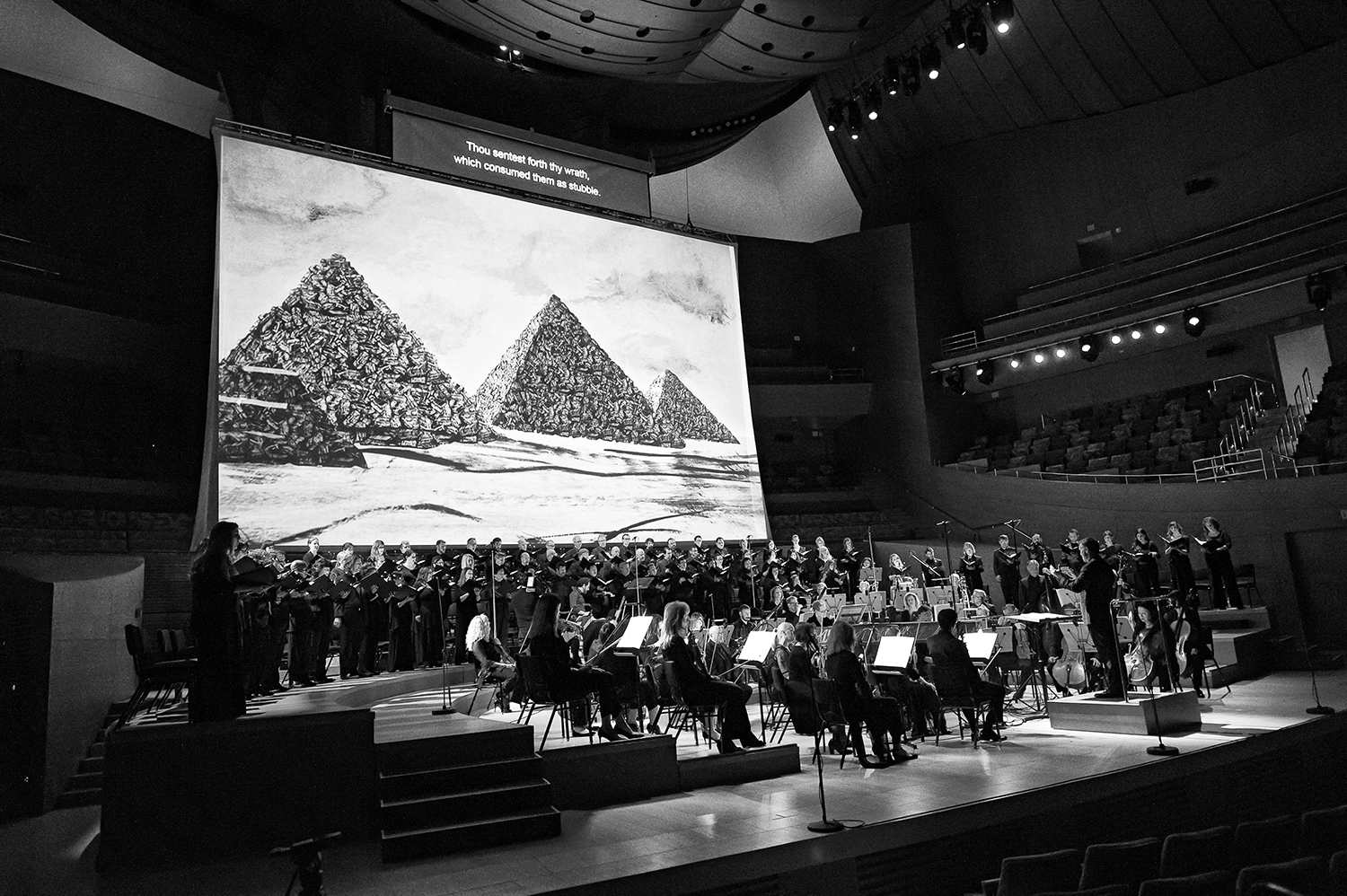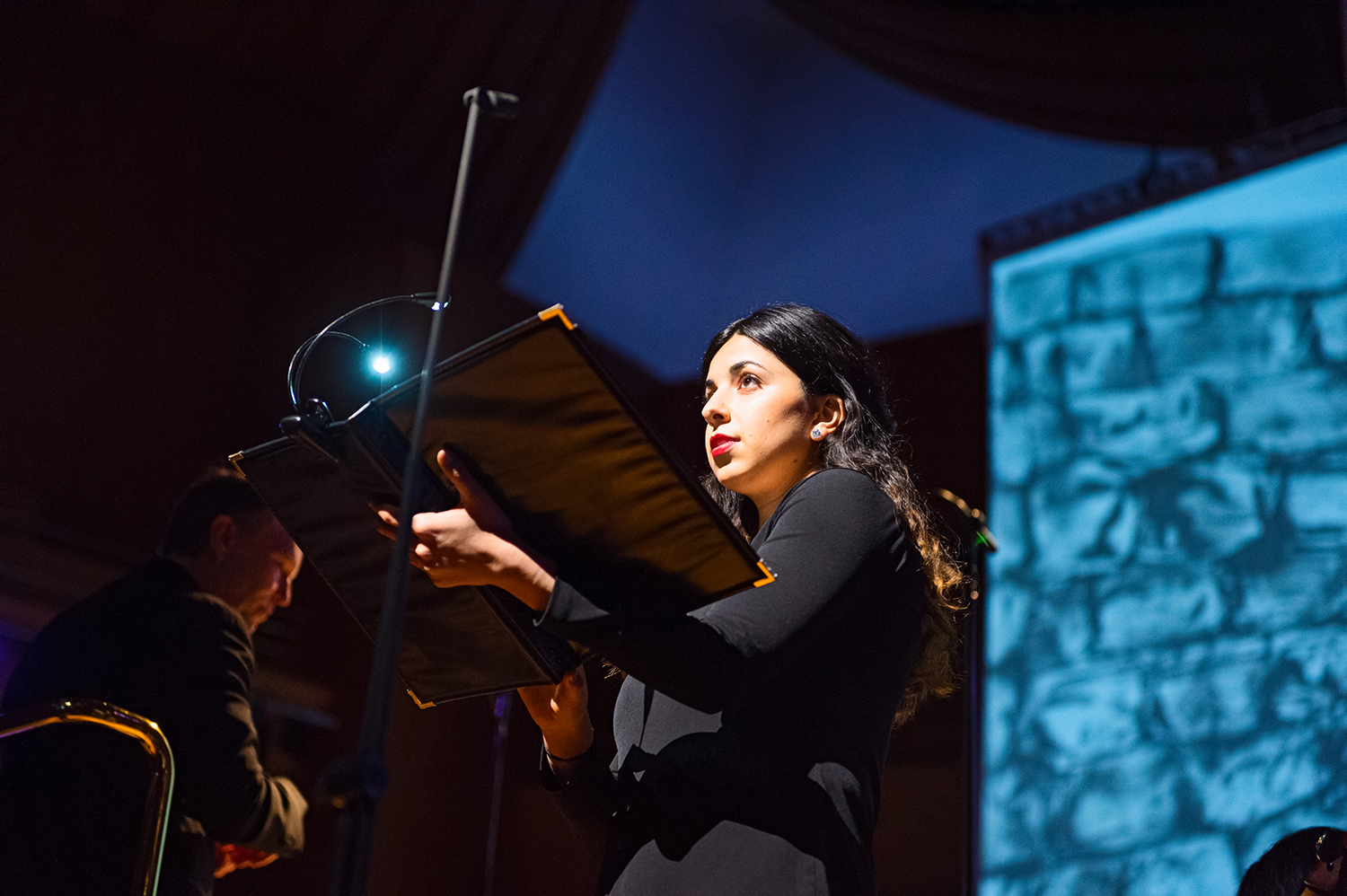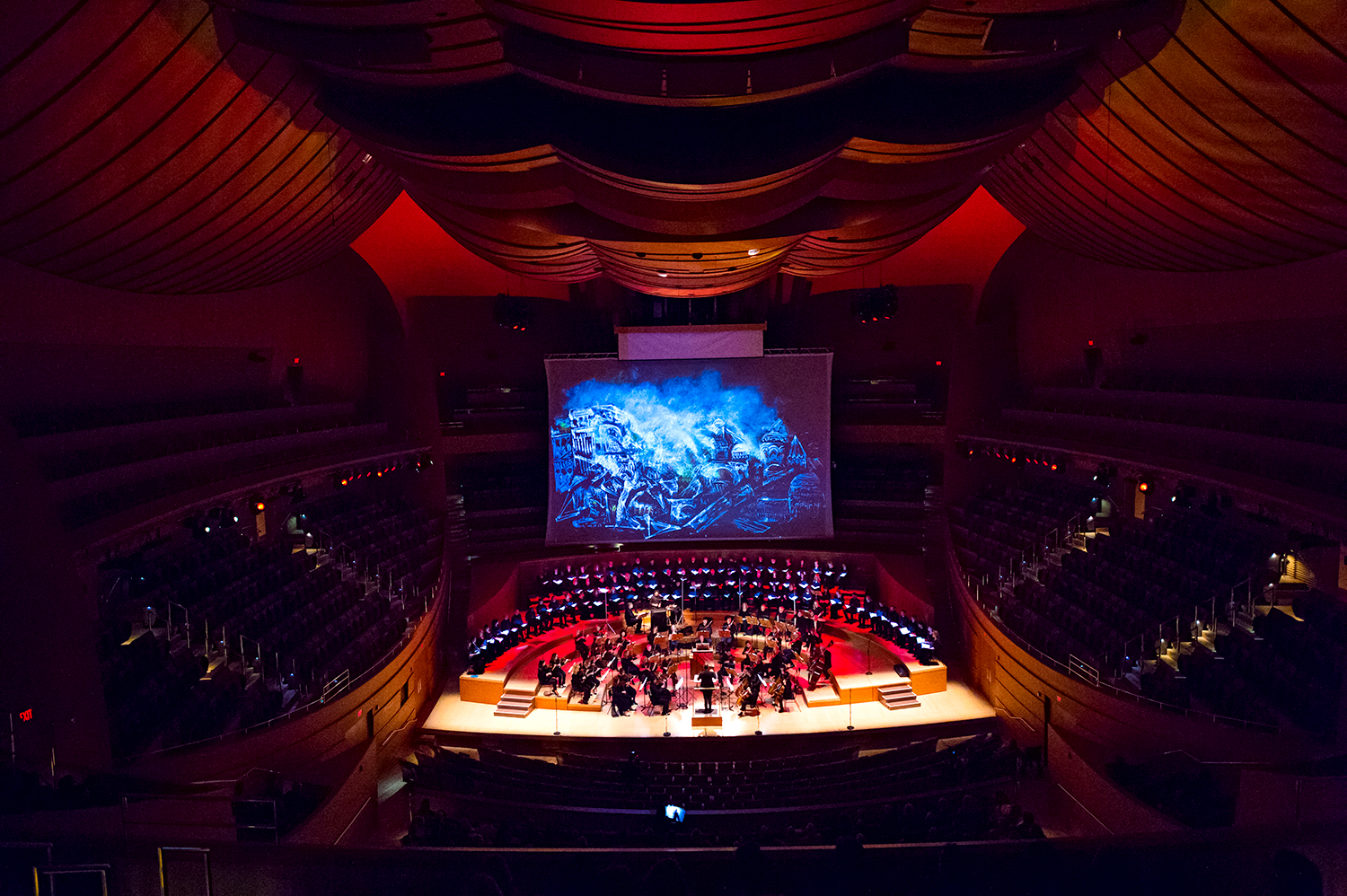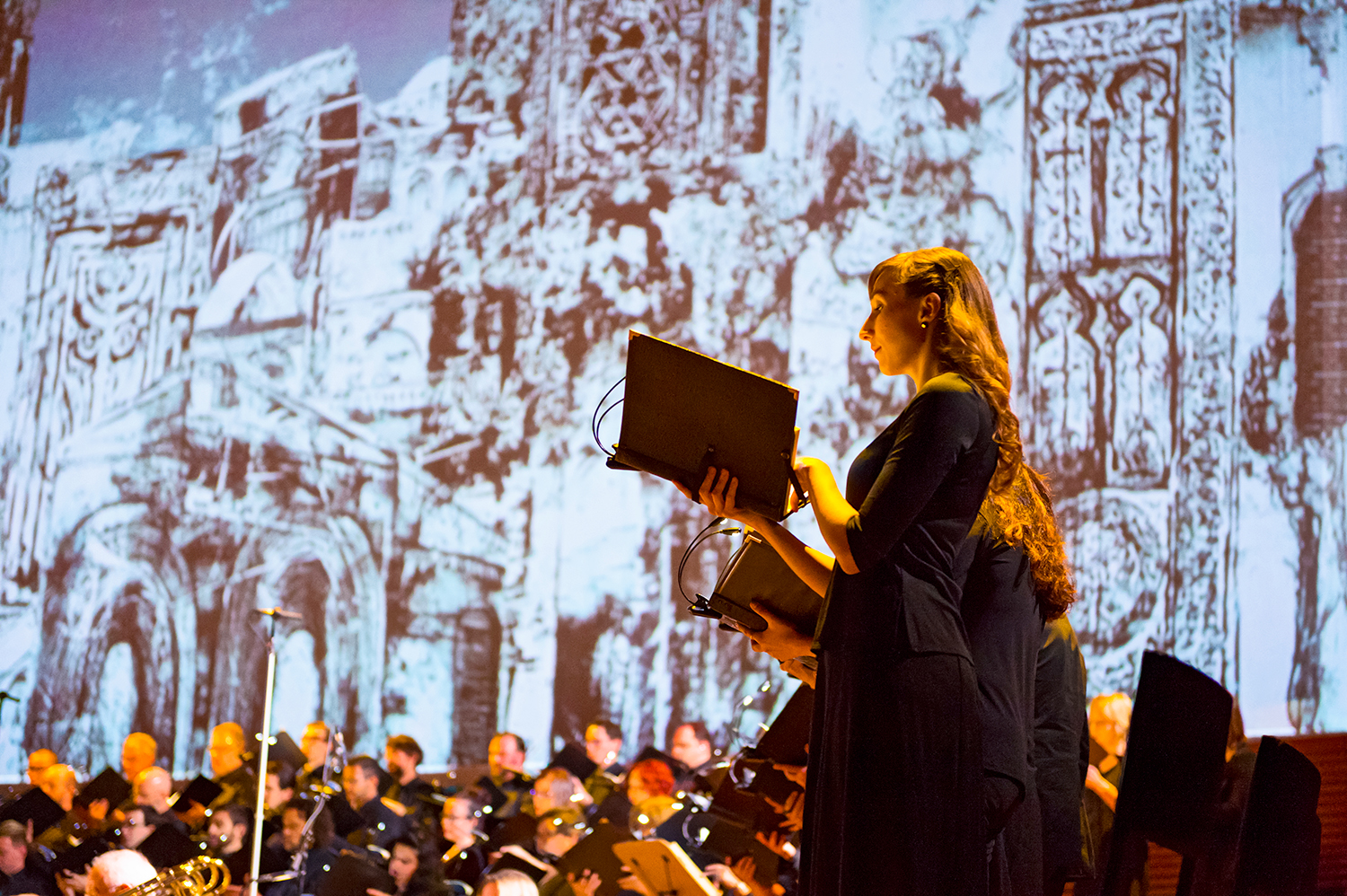Israel in Egypt
Our first installment of a two part series exploring the Music Center's commitment to the artistic tradition of truth and beauty. Join us in observing the Los Angeles Master Chorale as they masterfully pose a question to all Angelenos, "Is history repeating itself?"
Walt Disney Concert Hall— On February 11, 2018, the Los Angeles Master Chorale collaborated with Syrian / Armenian artist, Kevork Mourad, to present a unique production of Israel in Egypt, by George Frideric Handel.
As part of the Master Chorale’s immersive concert initiative, the Chorale, conducted by Artistic Director Grant Gershon, performed Handel’s masterpiece while Mr. Mourad submerged listeners with a complex palette of animation and live illustration. The artist's visuals were projected onto a large screen behind eighty musicians which hung from the incredible concert hall ceiling. On one hand, they depict the story of Israelites in Egypt; and on the other, they speak directly about war as plague.
Israel in Egypt is Handel’s fifth English oratorio, and the second installment of the Master Chorale’s Hidden Handel series. Its purpose is to expose contemporary audiences to Handel’s lesser-known works— beginning with the musical ode, Alexander’s Feast. Although not as popular as Handel desired at first debut in 1739, Israel in Egypt has proven itself to be a historically significant work. This composition has not only inspired many world renowned composers, such as Mozart, but was also featured in one of the earliest recordings of a human being's voice.
“What’s so special about this music is not how dramatic the telling of the plagues are,” said Associate Conductor, Jenny Wong. “It’s really what happens after the destruction and the miracle of deliverance.”
Finding inventive ways to bring a deeper understanding of choral music through multiple sensory engagement, the Master Chorale fulfills half of its primary initiatives. “Grant is seeking to redefine the choral experience,” explains Jean Davidson, President and CEO of the Master Chorale. “There are a lot of preconceived notions about what choral music is, and you saw today that it can be very expansive.”
Absolutely, if you're in Southern California, attend a Master Chorale event. With sublime execution of their programs, a symphony of beautiful voices, orchestral accompaniments and stunning collaborations... their contribution of this art form is vital to any thriving nation.
Enter stage right: Kevork Mourad. Born in the town of Kamechli, Northern Syria, he currently resides in New York and is the only non-musical member of Yo Yo Ma’s ensemble, Silk Road. “When you grow up in the Middle East, everything is about storytelling,” Kevork stated to members of, The Blue Ribbon Group, during an exclusive discussion. “My aim is to become a storyteller, so I try to illustrate music.”
Going into this project, Kevork was instantaneously amazed by how Israel in Egypt so deeply takes root in his own family's migration story. He focused on questions such as: What do you take with you when you're forced to leave home? How do you start your new life when nothing is left? These parallel themes from Handel's oratorio strike hauntingly close to the core.
"I was documenting my emotions about the place where I grew up; but when I went back to see it, what I remembered no longer exists," said Kevork.
"Plague is war."
When speaking of plague, he refers to utter devastation suffered by the jewel city of Aleppo. They endured a two-year battle between the Syrian Army and Rebel Forces. What was quite a provocative topic that the artist discussed were his recollections of Syria before the war; and a lamentation over what was lost. "I remember craftsmen, calligraphers, artists and musicians all living among the architectural gems of the city, in a sort of haven for humans to thrive together," he reveals.
"People lived in peace."
Returning to a running subject of interest for us... we asked Mr. Mourad:
What do you believe the role of artists are in preserving and presenting history?
First of all, when you're an artist, I think it doesn't matter what you do. The environment affects your thinking, your work and your message. It doesn't matter what direction you go in your history, your memory, you can assemble these rich layers of tapestries of our collective experience. When you look at other cultures you realize that we share this, we share preserving heritage.
When you preserve your heritage through your art... slowly, bit by bit, it becomes this wall and each one of us is a part of it, like a stone. We can build this wall together when we do our parts. This wall does not divide, it brings us together; and it creates a beautiful place of safety.
What was the stone that you were adding to the wall in this production?
Basically, with this project I was trying to say, enough is enough. The history is repeating itself. We are killing each other. We're destroying civilizations and we have to see this piece as a mirror. When you listen to this amazing chorus, it should move you, and then you leave here ready to do your role for peace. If you're moved to something better, it means you can inspire someone else... which creates a ripple effect in the direction of a better world.
Art and music can do that.


